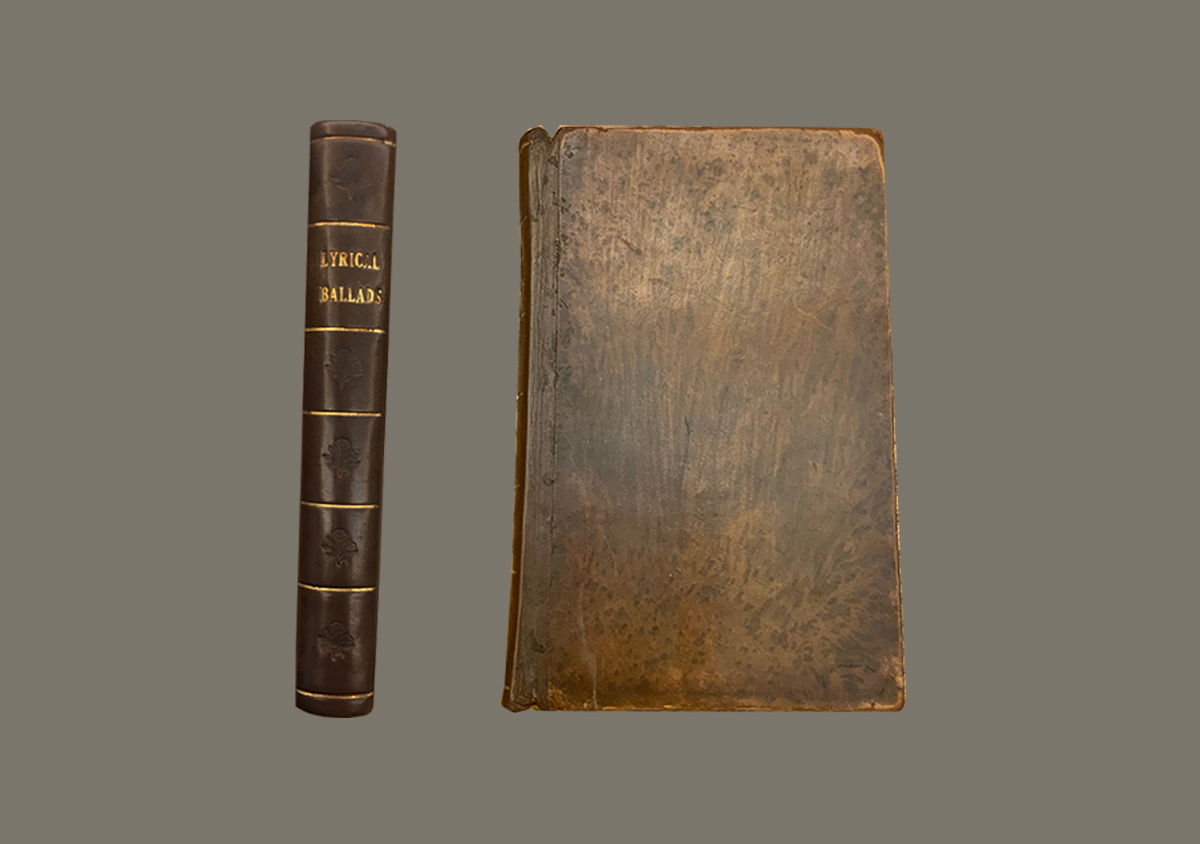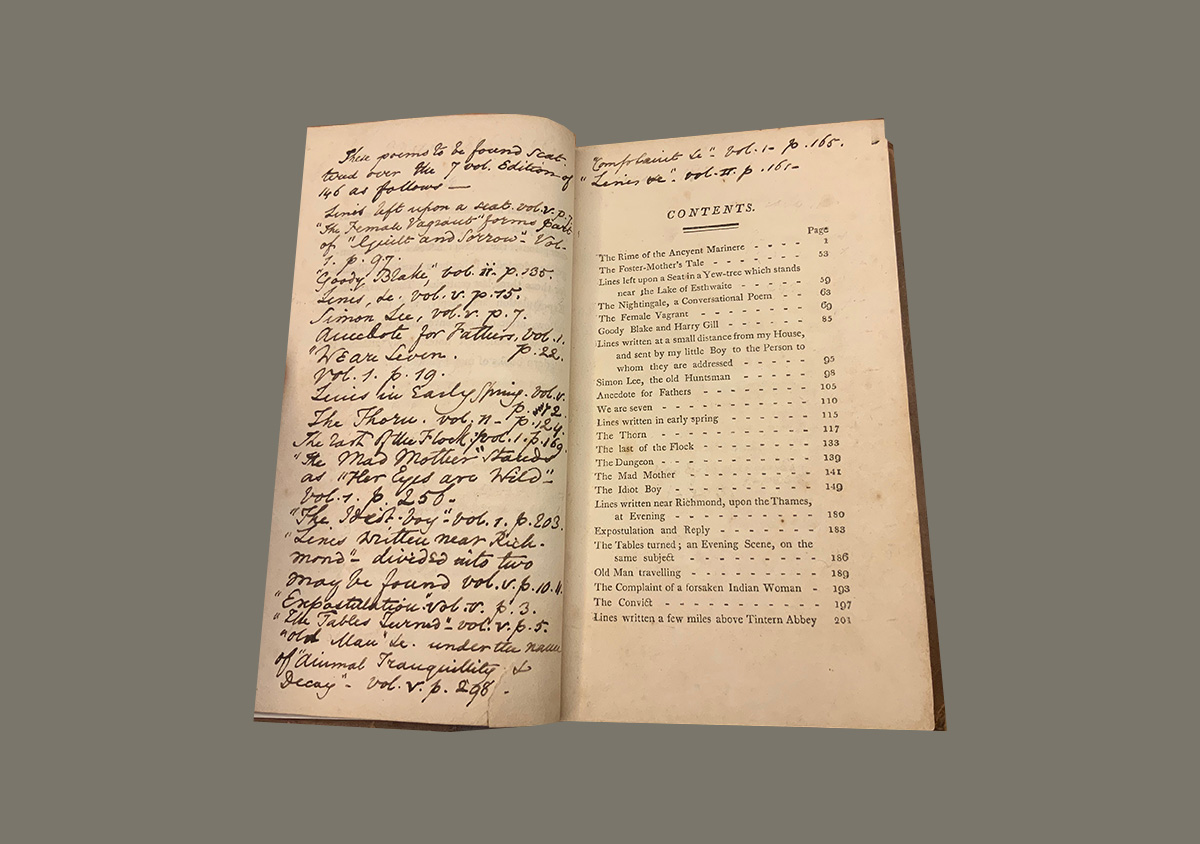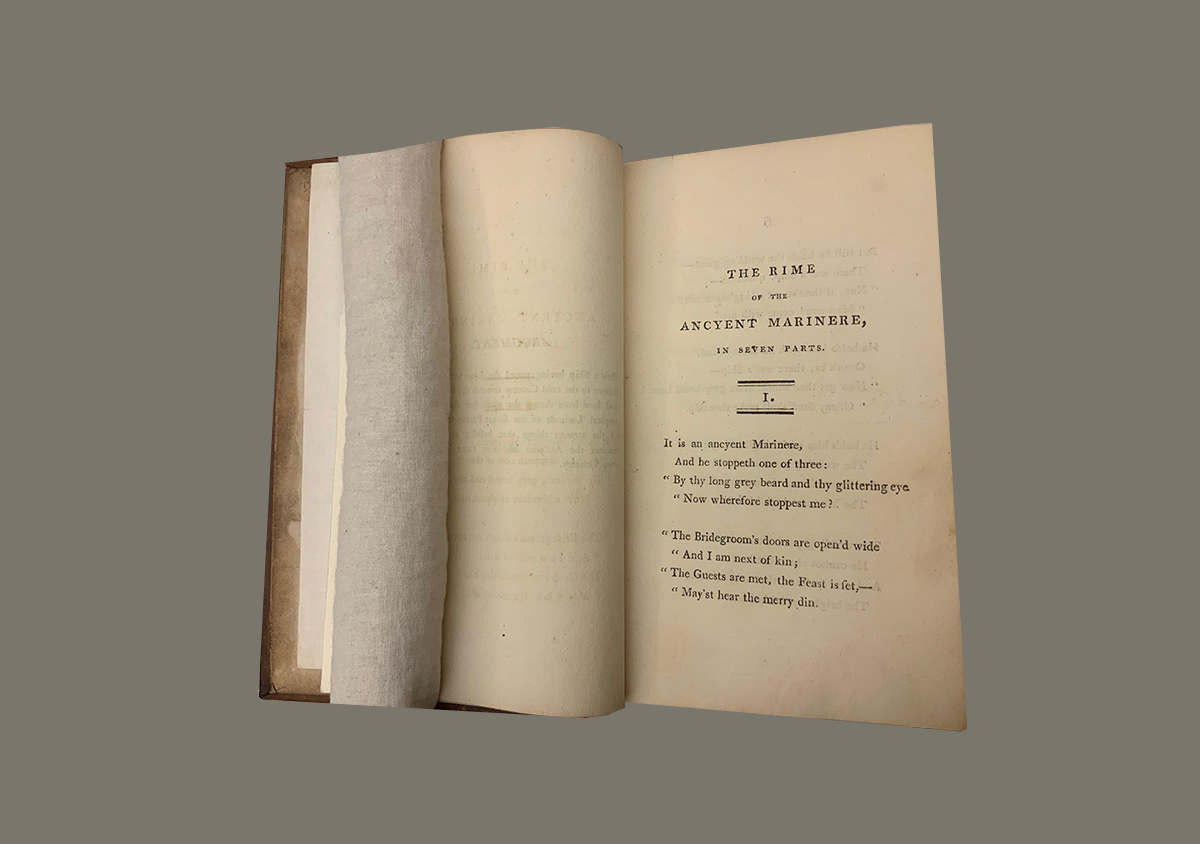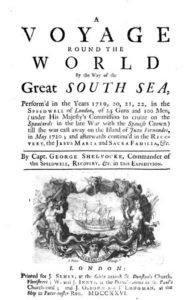
Lyrical Ballads, assembled by William Wordsworth and printed by the bristol-based Biggs and Cottle, was a slender, foolscap octavo volume, measuring roughly 6 inches by four inches. In a letter to Walter Scott, Wordsworth wrote of his affinity for small volumes: "It was a beautiful book, but when I wished for another copy it was for one of a pocket size. Any poetry which I like, I wish for in that size" (Wordsworth 255).
The small size of Lyrical Ballads coincided with the popularization of the pocketbook in mid-late 18th century England. As Stephen Colclough tells us in his analysis of the textual history of pocketbooks, the typical pocket memorandum was a small, portable book that functioned as a reference guide, calendar, and journal with ruled pages for notetaking (Colclough 160). Like the pocketbook, Lyrical Ballads was meant to be unchained from the library shelves and brought into nature.

Inscription reads: These poems to be found scattered over the 7 vol. edition of 146 as follows- Lines Left Upon a Seat. Vol. V.p.7. “The Female Vagrant” forms part of “Guilt and Sorrow” Vol. 1.p.97. “Goody Blake,” vol ii.p.135. Lines, ? . vol.v.p.7. Simon Lee, vol. v.p.7. Anecdote for Fathers, vol.1.p.22. “We are Seven.” Vol.1.p.19. Lines in Early Spring. Vol.v.p.72. The Thorn. Vol. ii – p.124. The Last of the Flock, vol.1.p.169. “The Mad Mother” starts as “Her Eyes are Wild” – vol.1.p.250. “The Idiot Boy” – vol.1.p.203. “Lines Written near Richmond” – divided into two may be found vol v.p.10.11. “Expostulation.” Vol.v.p.3. “The Tables Turned” – vol. v.p.5. “Old Man etc. under the name of “Animal Tranquility and Decay” – col.v.p.298. “Complaint etc” – vol.1.p.165. “Lines etc.” vol.II.p.161.
This inscription likely refers to the 7 volume Poetical Works of William Wordsworth, published by George Bell and Sons, 1892
In this 1798 edition of Lyrical Ballads, Coleridge's Rime of the Ancient Mariner was positioned first in the table of contents. In the second edition of 1800, Coleridge's poem was moved to a later position in the volume.


With these lines of text, Coleridge's poem appeared for the first time in print. The center of the poem's dramatic action - the shooting of the albatross - was suggested by William Wordsworth, who directed Coleridge to the travel narrative of George Shelvocke, published in 1727.
